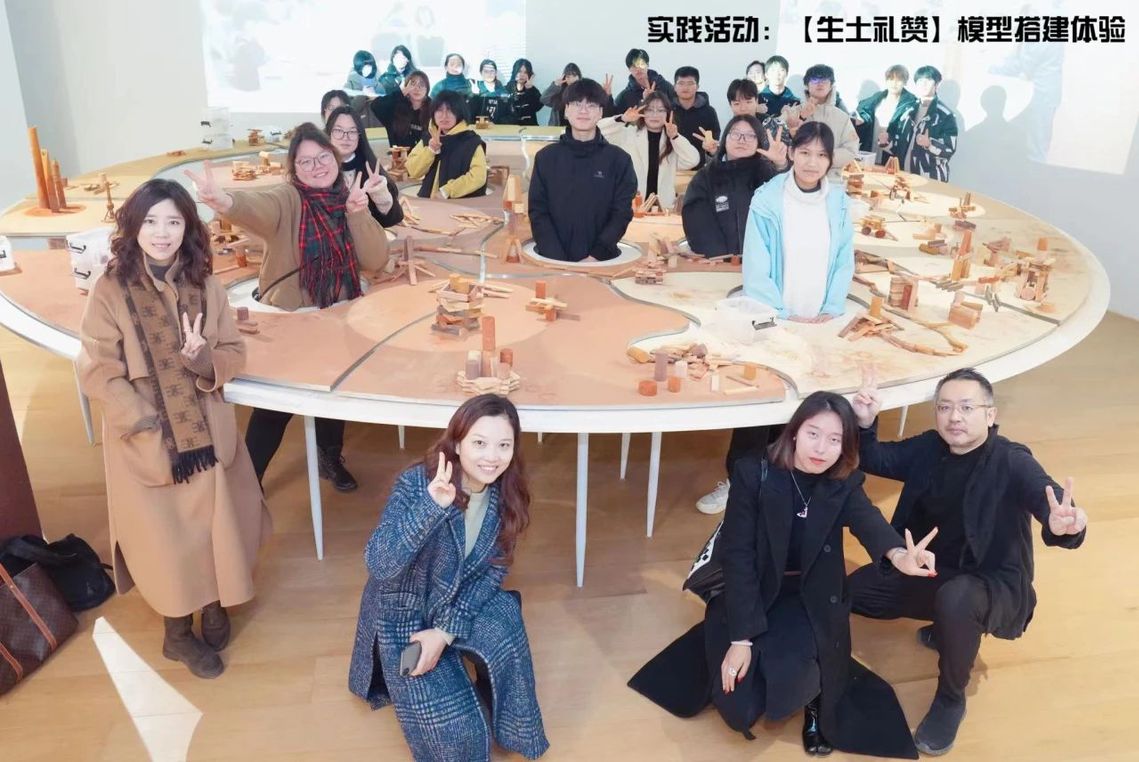Design Four-year Bachelor's Degree/Bachelor of Fine Arts
The Environment Design program focuses on the relationship between people and space in the development of society. Based on Shanghai and serving the Yangtze River Delta, the program focuses on the research of human environment design under the perspective of regional culture, closely integrates industry, academia and research, and cultivates innovative and applied Environment Design professionals with the core of spatial system capability.
Training goal
With the value orientation of humanism and social responsibility, this program is dedicated to cultivating students to view space with humanism, and according to the multidimensional perspective of human-space-idea-relationship of Environment Design, Environment Design is a system that constructs the theme of human-centeredness and the relationship with environment, and carries out the teaching of professional courses in the aspects of theory and history, thinking and method, space and modeling, engineering and technology, application and practice, etc. It is committed to cultivating students with good humanistic literacy, strong social responsibility, professional design thinking, expression, communication and management skills. The teaching of professional courses is carried out from the aspects of theory and history, thinking and methodology, space and modeling, engineering and technology, application and practice, etc. It is committed to cultivating high school students who have good humanistic literacy, a strong sense of social responsibility, and professional design thinking, expression, communication and management skills, and who are able to engage in interior and landscape planning, design, management and other aspects of the work of design organizations, enterprises and institutions with the ability to design spaces and to develop related areas such as planning, experiencing and service, They are able to engage in interior and landscape planning, design and management in design organizations and design departments of enterprises and institutions.
Core curriculum
Major Courses: Design Composition, Materials and Craftsmanship, Preliminary Architecture, Principles of Interior Design, Design Thinking and Expression, Furniture Design, Interior Design, Furnishing Art Design, Landscape Design, Exhibition Design, Interior Lighting Design, and Thematic Design Practice.
Main practical training: internships, visits, research, curatorial exhibitions, industry-academia-associated design project practice (design thematic practice), design (innovation and entrepreneurship) competitions, international exchange activities, and graduation design.
Career path
Graduates of this program have strong theoretical knowledge of space design and practical ability, employment options are wide, can be engaged in: (1) designers, in the first-line design companies engaged in creative planning, space design work; (2) project manager, in the brand commercial companies, real estate development and other enterprises as a project management work. (3) Construction management, able to serve as project deepening and corresponding management work in construction enterprises. (4) Independent or joint venture, become a free designer.
Distinctive Programs
From the characteristics of the design discipline, the program emphasizes interdisciplinary integration, combines the needs of the industry, society and Education to form a practical talent cultivation mode of cross-domain linkage and multi-source stimulation, and sets the stage objectives of the curriculum system according to the growth rules of professional talents, and divides the four years of undergraduate study into three stages of 1+2+1, which are as follows: Observation/experience/understanding (lower years) - Design/expression/construction (second and third years) - Society/frontier/future (upper years). The four years of undergraduate study is divided into three phases: observation/experience/understanding (lower grades)-design/expression/construction (second and third grades)-society/frontier/future (upper grades), fully guaranteeing the systematic nature of students' learning. The systematic nature of learning is fully guaranteed. At the same time, the studio is used as a carrier to form a teaching operation mode of integrating science and reality, which progressively cultivates students' innovative thinking ability and technical application ability.
The program offers a wealth of international exchange study opportunities in the form of international co-curricula, international joint programs, international master lectures, international study visits, and dual-degree programs, covering countries (regions) such as Italy, the United Kingdom, Finland, Germany, the Netherlands, Australia, and Japan.


- Introduction of Digital Media Art of School of Art and Design
- Introduction of Environment Design of School of Art and Design
- Introduction of Visual Communication Design of School of Art and Design
- Introduction of Product Design of School of Art and Design
- Achievement Profile of Visual Communication Design

